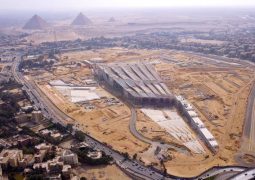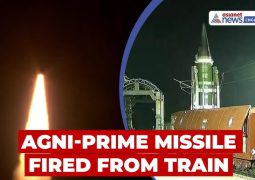Scenic Kashmir at the heart of India-Pakistani animosity

SRINAGAR (Reuters) – The Muslim-majority Himalayan region of Kashmir has been at the heart of more than 70 years of animosity, since the partition of the British colony of India into the separate countries of Muslim Pakistan and majority Hindu India.
The scenic mountain region is divided between India, which rules the populous Kashmir Valley and the Hindu-dominated region around Jammu city, Pakistan, which controls a wedge of territory in the west, and China, which holds a thinly populated high-altitude area in the north.
Since both India and Pakistan tested nuclear weapons in 1998, Kashmir has become one of world’s most dangerous flashpoints.
Here are some facts about the region.
HISTORY
After partition of the subcontinent in 1947, Kashmir was expected to go to Pakistan, as other Muslim majority regions did. Its Hindu ruler wanted to stay independent but, faced with an invasion by Muslim tribesmen from Pakistan, hastily acceded to India in October 1947 in return for help against the invaders.
The dispute over the former princely state sparked the first two of three wars between India and Pakistan after independence 1947. They fought the second in 1965, and a third, largely over what become Bangladesh, in 1971.
DIVISIONS
A U.N.-monitored ceasefire line agreed in 1972, called the Line of Control (LOC), splits Kashmir into two areas – one administered by India, one by Pakistan. Their armies have for decades faced off over the LOC. In 1999, the two were involved in a battle along the LOC that some analysts called an undeclared war. Their forces exchanged regular gunfire over the LOC until a truce in late 2003, which has largely held since.
ADVERTISEMENT
THE INSURGENCY
Many Muslims in Indian Kashmir have long resented what they see as heavy-handed New Delhi rule. In 1989, an insurgency by Muslim separatists began. Some fought to join Pakistan, some called for independence for Kashmir. India responded by pouring troops into the region. India also accused Pakistan of backing the separatists, in particular by arming and training fighters in its part of Kashmir and sending them into Indian Kashmir. Pakistan denies that, saying it only offers political support to the Kashmiri people.
INDIAN KASHMIR
Governed as the northernmost state of Jammu and Kashmir. It has two capitals, Jammu in winter (November-April), Srinagar in summer (May-October).
New Delhi claims the whole of Jammu and Kashmir as an integral part of India because the Hindu maharaja finally agreed to join India in October 1947.
PAKISTANI KASHMIR
Consists of the smaller Azad Kashmir (“Free Kashmir”) and the Northern Areas, which also formed part of the state before independence. Pakistan says a U.N.-mandated referendum should take place to settle the dispute over the region, expecting that the majority of Kashmiris would opt to join Pakistan.
CHINA
Controls a third section, the remote Aksai Chin plateau, historically part of Ladakh. India fought a border war over Aksai Chin with China in 1962, after China occupied a 38,000 square km (14,000 square mile) chunk of territory.
GEOGRAPHY
Parts of Kashmir are strikingly beautiful with forest-clad mountains, rivers running through lush valleys and lakes ringed by willow trees. The western Himalayan region is bounded by Pakistan to the west, Afghanistan to the northwest, China to the northeast, and India to the south.
POPULATION
Ten million in Indian Kashmir and more than 3 million in Pakistani Kashmir. About 70 percent are Muslims and the rest Hindus, Sikhs and Buddhists.
AREA
With an area of 222,236 square km (85,783 sq miles), it is slightly bigger than the U.S. state of Utah and almost as big as Britain. India controls 45 percent, in the south and east, Pakistan about a third in the north and west, and China the rest.
ECONOMY
About 80 percent agriculture-based. Crops include rice, maize, apples, saffron. The area is also known for handicrafts such as carpets, woodcarving, woolens and silk. Tourism, once flourishing, has been badly hit by the conflict.
Editing by Robert Birsel
- Previous Kremlin says cyber attacks on Russia often launched from U.S. territory
- Next Iran power struggle continues as Zarif keeps top diplomatic post










